


The Army Of Occupation December 1 1918 To September 1 1919 2nd Division

1938, ARMY LEVEL PRIZE, BRONZE, RIFLE COMPETITION, INFANTRY, NAMED, withRESEARCH
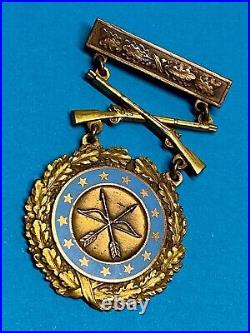
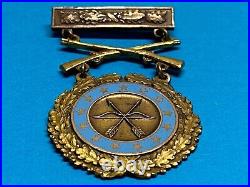
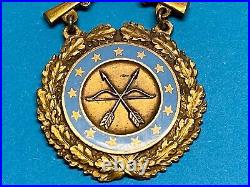

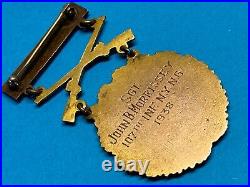
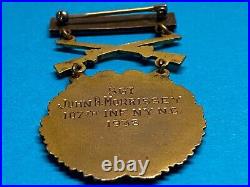
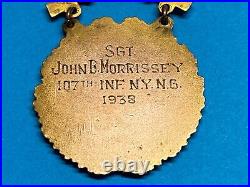


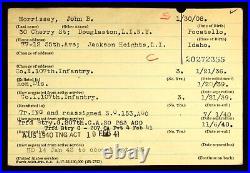
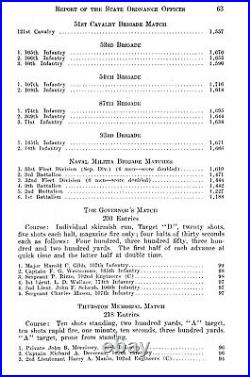
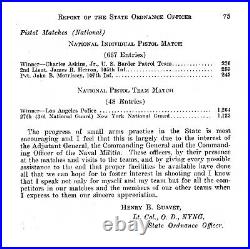

1938, ARMY LEVEL PRIZE, BRONZE, RIFLE COMPETITION, INFANTRY, NAMED, w/RESEARCH. This 1938 Infantry Army Level Prize for Rifle Competition was awarded to SGT John B. Morrissey, Company I, 107. SGT Morrissey was born on 30 January, 1908, Pocatello, Idaho. SGT Morrissey enlisted on 21 January 1936. When John Bacon Morrissey was born on January 30, 1908, in Pocatello, Idaho, his father, Harry, was 30 and his mother, Florence, was 23. He had two sons and two daughters with Anna R Morrissey. He died on February 3, 1982, in Aberdeen, Maryland, at the age of 74. These interwar Army marksmanship badges are highly sought after among collectors. We will include printed copies of the research artifacts. This Army level prize consists of three parts. Top bar that indicated either Army level or Corps / department level competition and served as a brooch to affix the assembled device to the uniform. The top bar is squared ended and ornamented with oak leaves, and was always worn with this bronze clasp and an enameled planchet prior to WWII. The top bar or brooch is a pin back with a functional rotating clasp closure. The second portion consists of an intermediate clasp of crossed arms to indicate the type of weapon that was used to earn the award rifle, pistol, or, soon thereafter, automatic weapons. In this case it has crossed rifles. The third, lower piece is a planchet, that when enameled, told the arm or the type of service, in this case, blue for Infantry. The central design is a bow and a pair of arrows. The planchet consists of three concentric designs. 0625 in diameter, displays a compound bow and two crossed arrows, a symbol of marksmanship. Outside of that is a center ring, 015 in width, which displays 13 stars. An oak-leaf wreath executed in bronze surrounds the entire design, making the planchet 1-1/2 in width. The combatant arms had bronze stars with the ring enameled in blue for Infantry.


Antique Imperial Japanese Korea Occupation Medal 1907-1908 Army 13th Division
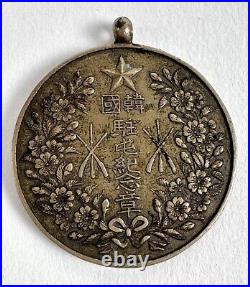
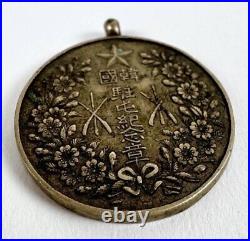
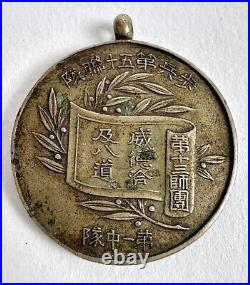
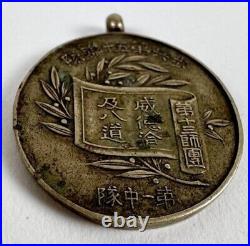
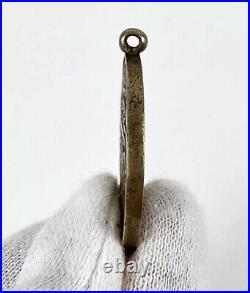
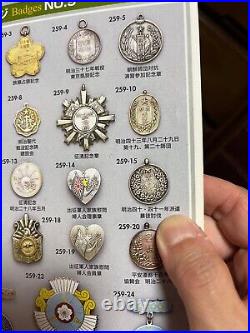

Antique Imperial Japanese medal. Front: “Korea Occupation Commemoration” Back: “15th Infantry Regiment, 1st Company, 13th Division” “Virtue and Benevolence to the Eight Provinces”. 15th Infantry Regiment: Established in Takasaki, fought in major conflicts. Inscriptions reflect Japan’s military presence in Korea. Intricate military and floral designs. Imperial Japanese Army memorabilia fans. Don’t miss this rare piece of history! It is expected to take more than a month to arrive.


1939, ARMY LEVEL PRIZE, BRONZE, RIFLE COMPETITION, INFANTRY, NAMED, withRESEARCH
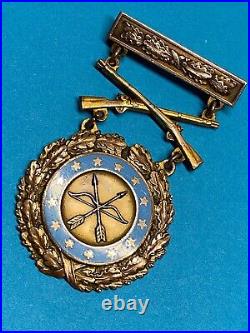
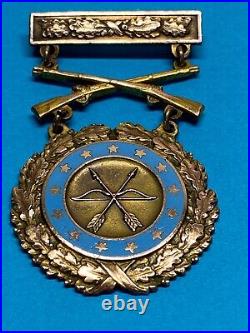
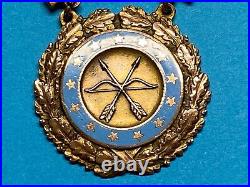
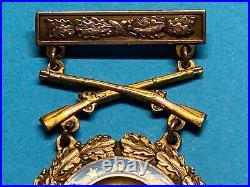
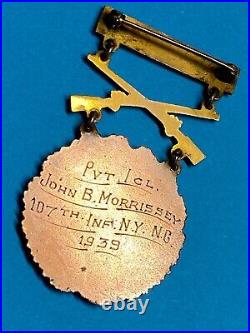
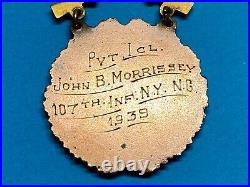
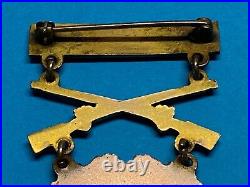
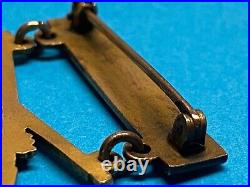
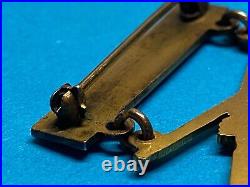

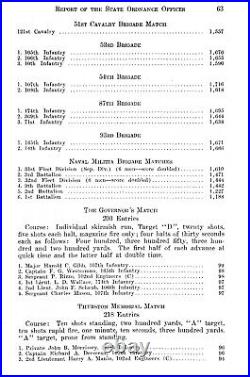


1938, ARMY LEVEL PRIZE, BRONZE, RIFLE COMPETITION, INFANTRY, NAMED, w/RESEARCH. This 1939 Infantry Army Level Prize for Rifle Competition was awarded to Private First Class John B. Morrissey, Company I, 107. SGT Morrissey was born on 30 January, 1908, Pocatello, Idaho. SGT Morrissey enlisted on 21 January 1936. When John Bacon Morrissey was born on January 30, 1908, in Pocatello, Idaho, his father, Harry, was 30 and his mother, Florence, was 23. He had two sons and two daughters with Anna R Morrissey. He died on February 3, 1982, in Aberdeen, Maryland, at the age of 74. These interwar Army marksmanship badges are highly sought after among collectors. We will include printed copies of the research artifacts. We are limited to 12 images, so there are more artifacts than what is displayed here. This Army level prize consists of three parts. Top bar that indicated either Army level or Corps / department level competition and served as a brooch to affix the assembled device to the uniform. The top bar is squared ended and ornamented with oak leaves, and was always worn with this bronze clasp and an enameled planchet prior to WWII. The top bar or brooch is a pin back with a functional rotating clasp closure. The second portion consists of an intermediate clasp of crossed arms to indicate the type of weapon that was used to earn the award rifle, pistol, or, soon thereafter, automatic weapons. In this case it has crossed rifles. The third, lower piece is a planchet, that when enameled, told the arm or the type of service, in this case, blue for Infantry. The central design is a bow and a pair of arrows. The planchet consists of three concentric designs. 0625 in diameter, displays a compound bow and two crossed arrows, a symbol of marksmanship. Outside of that is a center ring, 015 in width, which displays 13 stars. An oak-leaf wreath executed in bronze surrounds the entire design, making the planchet 1-1/2 in width. The combatant arms had bronze stars with the ring enameled in blue for Infantry.


Antique Imperial Japanese Army Canteen with Arsenal Stamp Rare
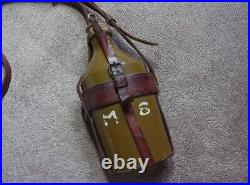
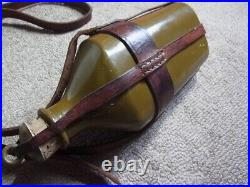



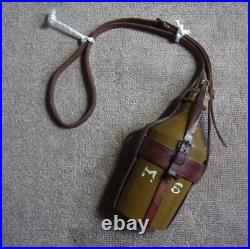
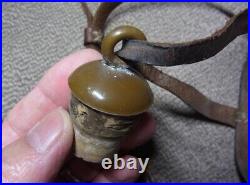

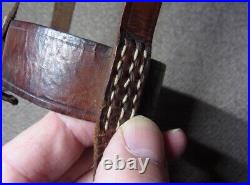
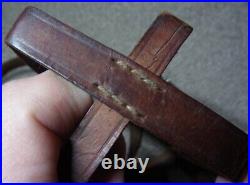
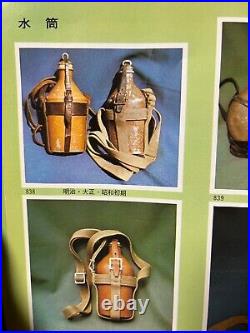

Antique Imperial japanese canteen. This authentic antique Imperial Japanese Army canteen is a remarkable relic from the past. The canteen’s paint remains comparatively pristine, a testament to its preservation over the years. This piece is not just a mere military item; it’s a slice of history, a connection to the daily life of a soldier from a time that shaped the world. Whether you’re a collector of military antiques or have a keen interest in World War II memorabilia, this canteen is a rare find that will take pride of place in any collection. International Buyers – Please Note. Thank you for your understanding.


WWII Imperial Japanese Army IJA Type 60 Practice Radio Transmission Box TKS Rare

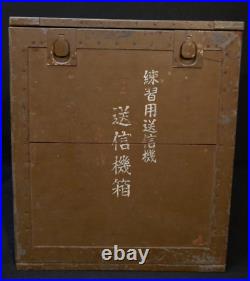
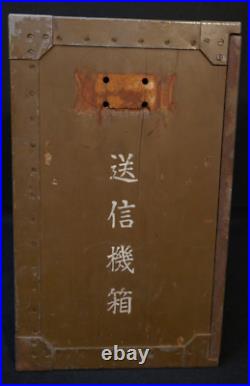
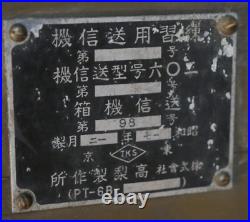
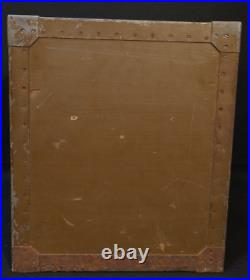
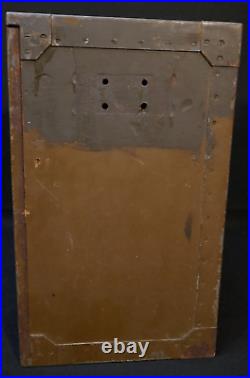
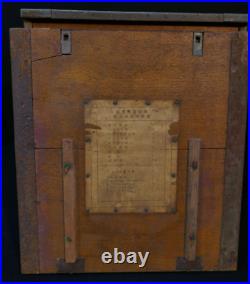
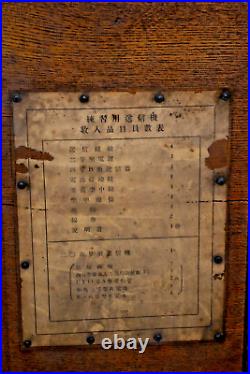

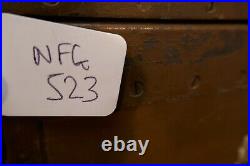

WWII Imperial Japanese Army IJA Type 60 Practice Radio Transmission Box TKS. Interwars – WWII WWII Imperial Japanese Army IJA Type 60 Practice Radio Transmission Box TKS (16 x 14 x 10) Small Field Desk Size Made in Kyoto, Has a Parts List that Includes Aerial Etc – No Components are Present, Good Issued. As Photographed with wear and side handles removed as seen – Early Production. A Nice Candidate for any Collection, Library, or Display. Recent Estate Collection Acquisition & Presented as Acquired, Rare – Excellent Display Piece! Check back often – we search estates and sources across the world to bring a fine selection of militaria. Please review all photos for details regarding the condition of the item listed – further condition information will be included in the listing as is relevant, if you need additional photographs or have questions regarding the condition please do not hesitate to ask. I describe all items to the best of my ability – please do not hesitate to ask any and all questions prior to the close of the listing. Mistakes very rarely occur – however if one does please rest assured that it will be corrected. International Buyers are Welcome!


RARE! WW1 U. S. ARMY HERO! 32nd INF. DIVISION VICTORY MEDAL KIA PLAQUE JUL 1918
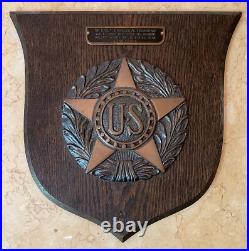

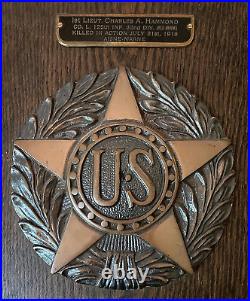
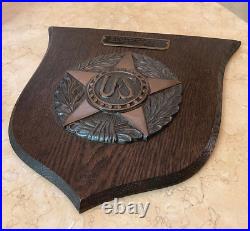
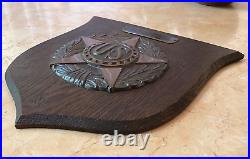

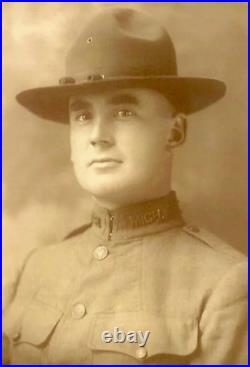
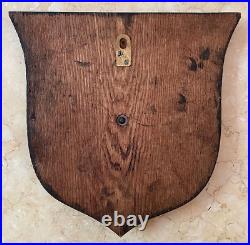
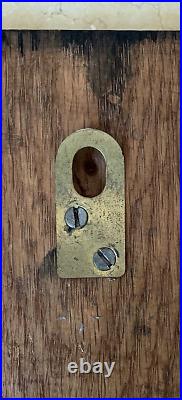

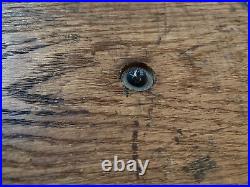

ARMY ID’d 32nd DIVISION VICTORY MEDAL KIA PLAQUE JULY 31, 1918. ARMY ID’d 32nd DIVISION VICTORY MEDAL KIA PLAQUE JULY 31, 1918 NAMED TO WAR HERO. KILLED IN ACTION JULY 31st, 1918. BIRTH: 11 Jan 1887 Port Huron Township, St. Clair County, Michigan, USA. DEATH: 31 Jul 1918 (aged 31) Sergy, Departement de l’Aisne, Picardie, France. BURIAL: Lakeside Cemetery Port Huron, St. Charles Hammond Son of Robert Hammond born in Ireland, and Sarah Rosetta McIntosh born in Ontario, and brother to John J. Born in Canada and Francis W. His dad was a railroad engineer. Charles was a member of the national guard, well liked and respected by the men who chose him to be promoted to the rank of 2nd Lieutenant, which. Was customary in that time. Also, a member of the Masonic Lodge, and articles about him were often found in the local newspaper. He also was an excellent machinist by trade. He enlisted in the U. Army in 1910, at the age of 23. When his regiment was activated, they were sent to El Paso Texas to deal with Poncho Villa. He was promoted at that time to 1st lieut. When ww1 began, the unit was deployed. To France on Feb. 1918, the 125th Infantry, 32d Division, A. Being then, a part of the Red Arrow Division. It was on July 31 1918 that they were tasked with destroying a machine gun nest on hill 212. While leading his men of Company L into the battlefield of France, he was wounded in the arm but continued on leading his men but received a fatal wound killing him in action on July 31, 1918, on Hill 212 in Sergy, France. After his death, his men accomplished their mission, taking out Hill 212. He was one of the first men from Port Huron to die and many more from across America and abroad were to follow as the war raged on. His funeral was befitting a hero and the casket displayed at the old city hall was finally placed on a Caisson, and the long procession of legionnaires, mason, dignitaries and ordinary folks, slowly and solemnly, wound it’s way to the cemetery for burial. Many honors were awarded to him Posthumously: The Distinguished Service Cross for heroism. Croix de Guerre (The Cross of War) France’s highest medal award to a non French Citizen Medals from the British, and Belgian American Legion Post 8 in Port Huron was named in his honour (1919,). Army Company L, 125th Infantry Regiment, 32d Division, A. Date of Action: July 31, 1918. Citation: The Distinguished Service Cross is presented to Charles A. Hammond, First Lieutenant, U. Army, for extraordinary heroism in action near Sergy, France, July 31, 1918. Advancing up and beyond Hill No. 212, First Lieutenant Hammond was shot through the arm, yet he refused to go to the rear, even for first-aid treatment, but continued to assault with his platoon, until he received two more wounds, the last of which caused his death. 1918 Home Town: Port Huron, MI. Army, World War One-Pvt. Hammond died in the service of his Country. Awards: Purple Heart Medal, WW1 Victory Medal. THE EXACT DESIGN OF THE VICTORY MEDAL STAR IN THE CENTER OF THE PLAQUE IS ALSO USED IN THE U. WW1 VICTORY MEDAL LAPEL BUTTON THAT WAS MADE IN CONJUNCTION WITH THE WW1 U. VICTORY MEDAL COMMISIONED BY THE U. WAR DEPARTMENT AND U. THE SOLID BRONZE EMBLEM WAS DESIGNED BY SCULPTOR ADOLPH ALEXANDER WEINMAN OF NEW YORK CITY UNDER SUPERVISION OF THE COMMISSION OF FINE ARTS. THE BRONZE WORKMANSHIP IS VERY WELL DONE AND REFLECTS A HIGH LEVEL OF QUALITY AND CRAFTSMANSHIP. The World War I Victory Lapel Button first issued November 14,1919 is a five-pointed star 5/8-inch in diameter on a wreath with the letters U. For persons wounded in action, the lapel button is silver; for all others, the lapel button is bronze. Eligibility requirements are the same for the World War I Victory Medal. VICTORY MEDAL STAR IS SOLID BRASS. PLAQUE IS WOOD (OAK). RETAINS ITS ORIGINAL BRASS HANGER ON THE REVERSE. EMBOSSED ON THE FRONT LOWER APEX : J. J. R. WITH AN A CIRCLE WITHIN A CIRCLE JUST ABOVE IT. OVERALL DIMENSIONS: HEIGHT 12″ x WIDTH 11 5/8″ x THICKNESS 1. The Victory Button was designed by. The sculptor, Adolph Alexander Weinman of New York City. Under the supervision of the Commission of Fine Arts. HAMMOND IN HIS WW1 ERA MICHIGAN NATIONAL UNIFORM PROVIDED WITH THE PICTURES IN THIS LISTING IS FOR REFERENCE ONLY AND IS NOT INCLUDED. THIS IS NOT A REPRODUCTION.


Antique Imperial Japanese Army Medal 1921 Maneuvers Box Rare Military Award
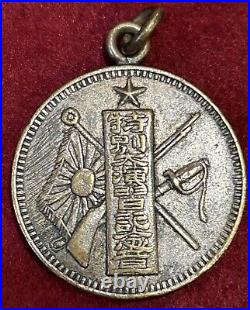
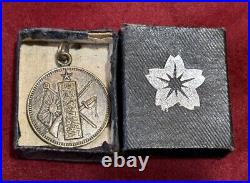
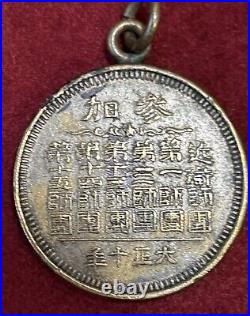
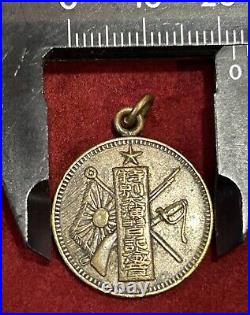
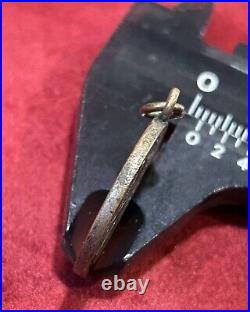
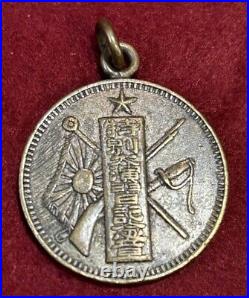

Antique Imperial Japanese medal. Rare Imperial Japanese Army Medal from 1921 Special Grand Maneuvers. Authentic antique military award with original box. Commemorates major exercises involving multiple divisions. Features rising sun, star, and weapons motifs. Excellent condition with attractive patina. 1.5 inches / 38mm in diameter. Incredible piece of early Taisho era military history. Perfect for collectors of Japanese militaria and medals. Emperor’s son (future Hirohito) oversaw these landmark maneuvers Involved over 100,000 troops, aircraft, and cutting-edge technology Simulated defense of Tokyo region against invading forces Culminated in massive mock battle along Tama River. Don’t miss this chance to own a tangible piece of pre-WWII Japanese military heritage! Questions welcome – I’m happy to provide more details on this fascinating item. It is expected to take more than a month to arrive.


WWII US AAC Army Air Corps Duncan Field Repair Depot San Antonio Tuskegee Airmen
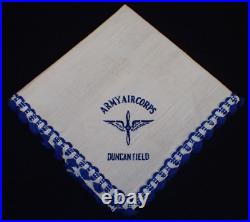


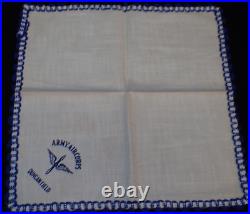

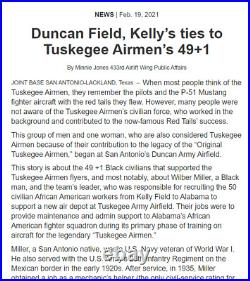
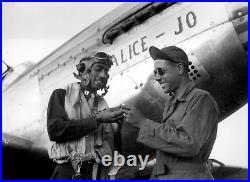
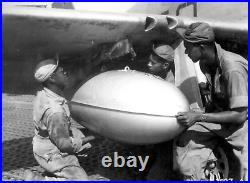
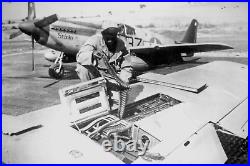

WWII US AAC Army Air Corps Duncan Field Repair Depot San Antonio Tuskegee Airmen. Original WWII United States AAC Army Air Corps Duncan Field Repair Depot (Kelly Army Air Field 1942 Merged) San Antonio, Texas with a Unique Tuskegee Airmen Connection (Partial Article Shown – Easily Found) Linen Embroidered Napkin, Decorative Edging, Good Early Period. As Photographed with wear and some discoloration as seen. A Nice Candidate for any Advanced Collection, Archive, or Display. Recent Estate Collection Acquisition & Presented as Acquired, Rare (Photos 6 – 9 Digital Reference Only). Check back often – we search estates and sources across the world to bring a fine selection of militaria. Please review all photos for details regarding the condition of the item listed – further condition information will be included in the listing as is relevant, if you need additional photographs or have questions regarding the condition please do not hesitate to ask. I describe all items to the best of my ability – please do not hesitate to ask any and all questions prior to the close of the listing. Mistakes very rarely occur – however if one does please rest assured that it will be corrected. International Buyers are Welcome!
